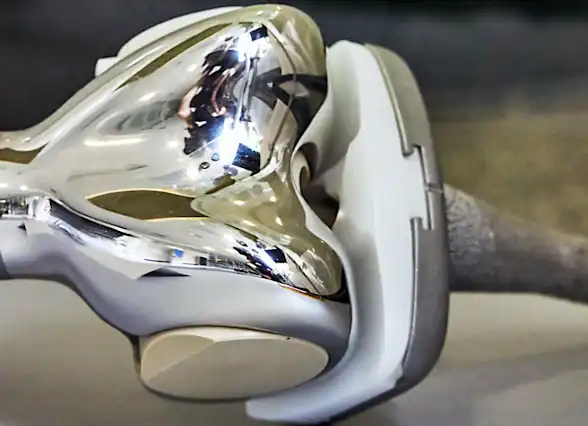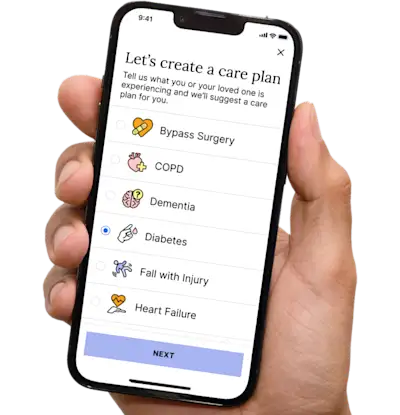What Do I Need to Know About Knee Arthroplasty (Replacement)?
Knee arthroplasty is the same thing as knee replacement. Surgeons expect a knee replacement to last at least 15-20 years.
Get insurance benefits, legal documents, and medical records in one place

Helpful Highlights
Total knee arthroplasty (TKA) is the same thing as total knee replacement surgery. Arthroplasty is the medical term for joint replacement.
The knee is replaced with an artificial joint (prosthesis) made of metal alloy and medical-grade plastic that functions like a natural, healthy joint.
Joint replacement surgery is intended to relieve pain, restore function and mobility, and help the individual resume normal activities.
Some medical professionals use the term knee “arthroplasty,” while others use knee “replacement.” However, the terms are interchangeable. Likewise, you may also hear or see them abbreviated as TKA or PKA (total or partial knee arthroplasty).
Definition
A total knee arthroplasty (TKA) is the medical term for a total knee replacement. TKA is a surgical procedure whereby the damaged or diseased knee joint is replaced with artificial material. No two knee replacements are alike and there is some variability in operative approaches. Usually, the surgery is completed within 1-3 hours, depending on the patient’s condition. This surgery may be considered for someone who has severe arthritis or a chronic and worsening knee injury.
Parts of a knee implant (prosthesis)
The knee replacement implant, also called a knee prosthesis, has three parts:
A metal alloy femoral component curves around the lower end of the femur (thigh bone).
The tibial component (top surface of the shin bone) is typically a flat metal alloy platform with a cushion of durable, medical-grade plastic.
A plastic button-type component is fastened to the back surface of the patella (kneecap).
Note that in a partial knee replacement, only one compartment of the knee joint is replaced.
Overview of knee arthroplasty (replacement)
There are four basic steps to a knee replacement procedure.
Prepare the bone. The surgeon makes a long incision directly over the knee, through which damaged cartilage surfaces at the ends of the femur and tibia are removed, along with a small amount of underlying bone - leaving healthy bone intact.
Position the metal implant. The removed cartilage and bone are replaced with metal components that recreate the surface of the joint. These metal parts may be secured with bone cement or "press-fit" into the bone.
Resurface the patella. The undersurface of the patella (kneecap) is cut and resurfaced with a plastic button. Depending upon the individual's joint, the surgeon may not resurface the patella, but it is very common to do so.
Insert a spacer. A very durable, medical-grade plastic spacer is inserted between the metal components to create a smooth gliding surface.
Can both knees be replaced at the same time?
Both knees can be replaced during a single surgery. A double knee replacement is also called a bilateral knee replacement. If your loved one is having issues with both knees, the surgeon may recommend a double knee replacement, provided your loved one is in generally good health and can tolerate a longer surgery and a more challenging recovery.
Revision knee arthroplasty
While orthopedic surgeons anticipate that knee replacements will last 15-20 years, knee implants do wear out or loosen over time. It might also become damaged if your loved one suffers an injury to the replaced knee. Once that occurs, revision surgery may be needed to replace the damaged parts of the prosthesis. Your loved one can extend the life of their implant by stretching, doing regular low-impact exercises (walking, golf, cycling, yoga, tai chi, swimming - avoiding breaststroke kicks), avoiding high impact exercise (such as jogging, leg presses), and taking precautions to avoid falls.
With partial knee replacements (the bone surfaces of only one compartment of the knee joint are removed and replaced with implants), a revision may be needed down the road to replace the other compartment of the knee joint, as well.
After the procedure
After surgery, your loved one will be moved to a recovery area (commonly called PACU - post-anesthesia care unit) for a few hours while the general anesthesia wears off. Medical staff will monitor their blood pressure, breathing, pulse, alertness, pain or comfort level, and need for medications. Any potential problems are immediately reported to the anesthesiologist (generally not the orthopedic surgeon, as anesthesia is the expert in post-surgical recovery).
Once admitted to a medical-surgical unit in the hospital or discharged home, your loved one will be asked to - frequently - breathe deeply, cough, or inhale and exhale using a device that keeps fluid out of the lungs (known as an incentive spirometer and a breathing trainer). How long your loved one stays in the hospital after surgery depends on their individual needs, though many people can go home the same day as surgery.
You can expect to see the following after surgery:
a long incision directly over the knee
the incision will be closed with stitches or surgical staples
a drain is usually placed in the incision site to remove fluid that will accumulate over the next day or two
a sterile bandage or dressing over the incision
your loved one may be on opioid and non-opioid pain relievers, as well as antibiotics
For more on what to expect when your loved one goes home, see our Guide on Preparing to Return Home After Knee Replacement and What Happens After a Knee Replacement?
RESOURCES
American Academy of Orthopaedic Surgeons (AAOS) – Total Knee Replacement
American Association of Hip & Knee Surgeons (AAHKS) – Total Knee Replacement
Johns Hopkins Medicine – Knee Replacement Surgery
Mayo Clinic – Knee Replacement
No content in this app, regardless of date, should ever be used as a substitute for direct medical advice from your doctor or other qualified clinician.
Get more support and guidance on insurance benefits, medical records and legal forms.
Helpful brings together your insurance benefits, legal documents, and medical records in one personalized place — so you always know what you have, and never have to search again.

Technology for Health Tasks. Mental Health for the Tough Stuff.
Helpful connects your medical records, insurance, and caregiving tasks automatically. And when you need more than logistics, a therapist is here to guide you.
In-Network and Covered
For Individuals, Couples and Families
HIPAA Compliant, Data Stays Private


Healthcare Tasks Simplified

From syncing records to spotting drug interactions, Helpful does the heavy lifting, turning complex health info into clear tasks and showing you benefits you can actually use, giving you clarity and control over your care.

In-Network Mental Health

Our licensed therapists are here to support you and your loved ones through stress, burnout, and life’s hardest moments, with an inclusive, compassionate approach that works with most insurance plans.

Create Legal Documents

Plan ahead by creating will, trusts, advance directives and more, that ensure your wishes are honored in the event you can’t speak for yourself -with Helpful guiding you every step of the way.